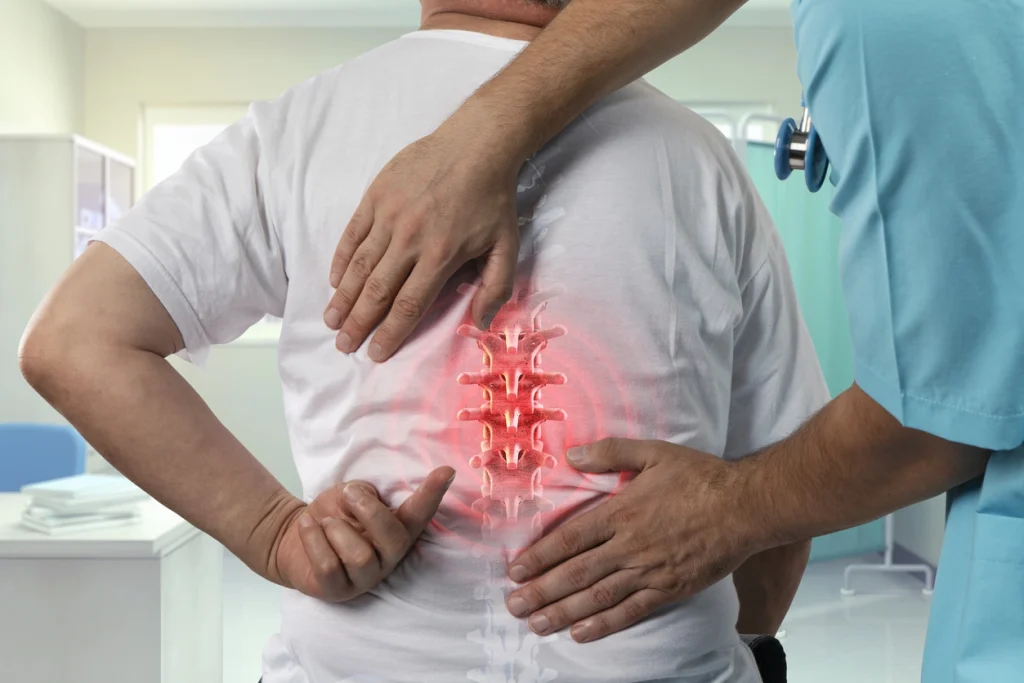Doctors offer pain management services through physical therapies, medications, and interventions to relieve back, neck, and spine pain. Treatments range from medications to more complex procedures and surgery. Tailoring therapies to patient needs allows specialists to optimize outcomes. Here is how doctors manage spinal pain:
Prescribing Medications
Medications may help relieve chronic spinal pain; doctors may prescribe anti-inflammatory medicines to prevent painful inflammation. They also recommend taking painkillers such as ibuprofen. Acetaminophen can relieve moderate to mild back pain. Muscle relaxants ease muscle spasms and tension. Some antidepressants relieve nerve-related pain associated with spine problems. Medication gives temporary relief while the patient enters long-term pain programs that involve physical therapy.
Applying Therapies
Physical therapy strengthens the back muscles, which stabilize the spine. Stretching exercises increase flexibility in muscles, tendons, and ligaments that are compressed by the spine. Postural training corrects sitting, standing, and lifting postures to decrease spine strain and offer relief. Therapists use manual therapy methods, such as massage, to ease tense muscles. Gentle joint manipulations restore motion. This form of therapy increases function as well as decreases pain.
Performing Innovative Procedures
Physicians conduct spinal injections and nerve blocks if other methods aren’t effective. Epidural steroid injections alleviate inflammation in the roots of the spine’s nerves. Nerve blocks cut off certain nerve signals that create pain. Radiofrequency ablation, or RFA, employs heat to disable troublesome nerves generating symptoms. When they have identified the sources of the pain with an image, physicians use different pain management services with great care to avoid pain.
Providing Chiropractic Adjustments
A chiropractor utilizes spinal manipulation and other hands-on methods to alleviate back pain. Chiropractors apply controlled force to spinal joints to relieve stiffness and soreness. This manual therapy realigns the spine, regaining mobility that is disrupted due to degeneration or damage. Alleviating pressure from nerves as they leave the vertebrae also eliminates shooting pains and numbness in the extremities.
Recommending Lifestyle Changes
A physician may prescribe ergonomic adjustments to work environments and lifestyle adjustments to relieve spine stress. They decrease your reliance on medications or intrusive treatments. Regular physical activity promotes increased blood flow, which brings healing proteins to spinal tissue. Low-impact activity, such as walking or swimming, builds muscle without overly straining the spine. Any additional body weight can burden your back, hastening disc degeneration. Diet adjustments to lose weight help reduce the load upon spinal joints.
Recommending Surgical Options
Surgery may require careful consideration for patients who do not experience relief from other treatments. Some specialists might exhaust all nonsurgical remedies first, while others only recommend surgery for intractable, disabling pain. Spinal surgeries remove or repair discs compressing nerves, widen narrowed canals, and fuse unstable vertebrae. Surgery is the last step if other therapies fail to relieve dangerous acute or chronic symptoms.
Experience Comprehensive Pain Management Services Today
Pain management services encompass relief therapies for acute, chronic, and cancer-related pain. These specialists offer multidimensional spine care, from electrolyzed pain relief for symptoms to long-term solutions targeting the causes of pain. Clinical evaluations reveal your condition, and tailored therapies optimize your results. Seeking care from spine doctors affords access to leading techniques. Contact a pain management specialist today.

